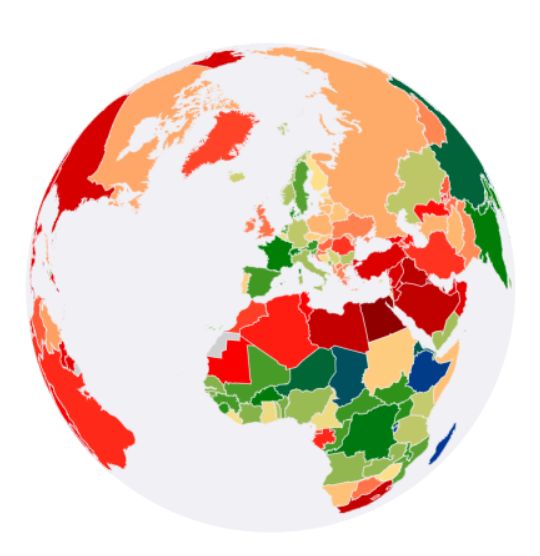Professor Cyrus Cooper co-authored comprehensive review of worldwide hip fracture secular trends, associated mortality and rates of post-fracture osteoporosis treatment.
Of all osteoporosis-related fractures, hip fractures cause the most morbidity with reported mortality rates up to 20-24% in the first year after a hip fracture. Loss of function and independence among survivors is profound, with 40% unable to walk independently, and 60% requiring assistance a year later. Hip fractures represent a major global public health concern, which places a heavy burden on patients, their families, and represents a significant cost-burden to healthcare systems.
In the recently published study ‘Global Epidemiology of Hip Fractures: Secular Trends in Incidence Rate, Post-Fracture Treatment, and All-Cause Mortality‘, an international group of researchers evaluated the secular trends in hip fracture incidence, post-fracture treatment, and all-cause mortality in 19 countries across five regions from 2005 to 2018. The study reveals that while the age- and sex-standardised hip fracture incidence rates decreased in most regions, the number of hip fractures worldwide are projected to nearly double by 2050 compared to 2018. A significant post-fracture treatment gap in fracture prevention was also observed for both sexes in all countries and regions, and particularly in men.
Professor Cyrus Cooper, Professor of Rheumatology at the University of Southampton’s MRC Lifecourse Epidemiology Centre (MRC LEC), a co-author of the global study, and who is also President of the International Osteoporosis Foundation (IOF), stated:
“The findings of this important study highlight the urgent need for improved strategies in hip fracture prevention and care. This should be seen as both a warning and a call to action for healthcare systems worldwide.”
Professor Cyrus Cooper
The international study analysed data from a large representative cohort involving 19 countries in Oceania, Asia, Europe, North- and South America. It examined the incidence of hip fractures, post-fracture treatment, and all-cause mortality following hip fractures, among patients aged 50 years and older, from 2005 to 2018. The study is unique in that, in contrast to previous reports on hip fracture incidence which are based on data with heterogeneity in data sources, study periods, and analytical approaches, it applied a standardised protocol and a common data model across all sites to provide comparable data. Age- and sex-standardised incidence rates of hip fracture were estimated using the 2020 United Nations world population as a standard. The number of hip fractures in 2030, 2040, and 2050 were projected based on the trends in the incidence rates and the World Bank data. Within 12 months following hip fractures, post-fracture treatment (defined as the proportion of patients receiving anti-osteoporosis medication), and the all-cause mortality rates were estimated.
The study identified 4,115,046 hip fracture cases in the cohort, with the following key findings:
- The reported age- and sex-standardised incidence rates of hip fractures ranged widely, from 95.1 (Brazil) to 315.9 (Denmark) per 100,000 population.
- Most countries and regions showed a decreasing trend in hip fracture incidence, with the most pronounced declines in Denmark (‐2.8% per year), Singapore (‐2.8%), and Hong Kong (‐2.4%). The largest increases were noted in the Netherlands (+2.1%), and South Korea (+1.2%).
- Despite the overall decline in hip fracture incidence, the total number of hip fractures is estimated to nearly double from 2018 to 2050.
- Within 1 year following a hip fracture, post-fracture treatment remained low, ranging from 11.5% in Germany to 50.3% in United Kingdom.
- One-year all-cause mortality rates following hip ranged from 14.4% (Singapore) to 28.3% (United Kingdom), while mortality trends varied from ‐5.3% to +18.4% per year.
- Males had lower use of anti-osteoporosis medication than females, higher rates of all-cause mortality, and a larger increase in the projected number of hip fractures by 2050.
References
Sing CW, Lin TC, Bartholomew S, Bell JS, Bennett C, Beyene K, Bosco-Levy P, Bradbury BD, Chan AHY, Chandran M, Cooper C, de Ridder M, Doyon CY, Droz-Perroteau C, Ganesan G, Hartikainen S, Ilomaki J, Jeong HE, Kiel DP, Kubota K, Lai EC, Lange JL, Lewiecki EM, Lin J, Liu J, Maskell J, de Abreu MM, O’Kelly J, Ooba N, Pedersen AB, Prats-Uribe A, Prieto-Alhambra D, Qin SX, Shin JY, Sørensen HT, Tan KB, Thomas T, Tolppanen AM, Verhamme KMC, Wang GH, Watcharathanakij S, Wood SJ, Cheung CL, Wong ICK. Global Epidemiology of Hip Fractures: Secular Trends in Incidence Rate, Post-Fracture Treatment, and All-Cause Mortality. J Bone Miner Res. 2023 Apr 29. doi: 10.1002/jbmr.4821. Epub ahead of print. PMID: 37118993. https://asbmr.onlinelibrary.wiley.com/doi/10.1002/jbmr.4821









